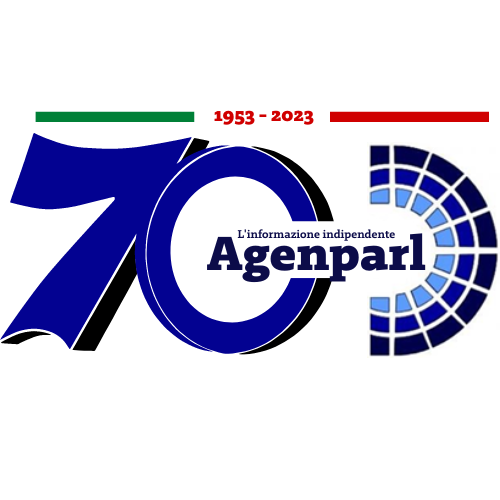 (AGENPARL) - Roma, 14 Febbraio 2023
(AGENPARL) - Roma, 14 Febbraio 2023(AGENPARL) – mar 14 febbraio 2023 Brussels, 14 February 2023 – Responding to the European Commission’s proposal for new truck and bus CO2 standards published today, the European Automobile Manufacturers’ Association (ACEA) calls for increased CO2 targets to be matched with vastly improved infrastructure roll-out, as well as a strengthened incentive and carbon pricing framework.
[View this e-mail in your browser](https://eccgaid.r.bh.d.sendibt3.com/tr/cl/qLc-SACDpaJSN_olMw3YNKmoaM4fMUNyfdccgfyx6HxXlGalJmJOBuzCTg1jQoFyiTzj7ctq_nocewIj4tLgBgf_QnqWwObvuACClZ8YxLaTS8wXBxSetJLqrlq-xqQ7HLpArX3U0dpV-1mqzuWl1KQZLRHXwfe7dItvWD-wH4li5jr__ZjH9WkHubSpYIkAOc2eJmeIieDuX7MKbHunthHxFO7kn46Qs4W0pX-XDNDMyQOnUabU76yuOOEMLbmgaZ9h_GLOYT08bT_htjp4zCRvJ-vMKvik0ZVbTRIja6HQKdgQacD-ICJ_EiAeS3NqddDONaa4U-ymmDYsUhJJEUWru6hrbq4ExTCpSSo3ULlvcDOVrIDCBNaJUNUkabrO7fMx1nTrpI2te-eTgF7x92eJ3UBCF7gZTzRG6XvS8yJqOXIdRn7_1w)
[ACEA Logo]
Truck and bus CO2 standards: ambition levels for all stakeholders must be aligned
Brussels, 14 February 2023 – Responding to the European Commission’s proposal for new truck and bus CO2 standards published today, the European Automobile Manufacturers’ Association (ACEA) calls for increased CO2 targets to be matched with vastly improved infrastructure roll-out, as well as a strengthened incentive and carbon pricing framework.
https://eccgaid.r.bh.d.sendibt3.com/tr/cl/qE–eLKfEwvfXi4Ut8XqNYbiTvmpoilDMA22XM9DDnv4hMzI8v0OisFji69ljlqHImX9cSHiGNwWt1KZnGfbvUQgcnNbuArGPn4dIkc7JwCo8ykdownrEImsNEVV4RdCJJm13tl1OZgXb4OL474dc3Rz68UBRki-D-acDE5lSADsyUdnPP1Md1cVSP3P5G-COHdbuGLjOVxxcGFSfx0Xz5MBQTqtuh2LnxqEQ9b5KXqvsaD_TJH-Gd8ywnDEQc2Av0aQjlrtPUwJjr6uMeXKtbRGsFwa-LzeZ5bHf9fk15AHnIhPir-7rWVQU5-JBxjFedizDk3FHFWepNKRb9iGzYQ8zytp3q0wIzQVrpcyU5jZ0NSBun5YwjdHIelarvVGF5HHwydTuaM8eT1czvgiV_jQHvrkul0VCtQuBR_0i–rPQnThupffQ
Trucks
“We are ready to deliver,” stated Martin Lundstedt, ACEA’s Commercial Vehicle Board Chairman and CEO of Volvo Group. “However, reaching -45% already by 2030 is highly ambitious. It would require equally ambitious action by policymakers to ensure that the other players in the transport and logistics value chain deliver at the same time.”
A CO2 reduction of 45% by 2030 means that more than 400,000 zero-emission trucks would have to be on the road, and at least 100,000 new zero-emissions trucks registered annually. This would require over 50,000 publicly-accessible chargers suitable for trucks to be in operation within just seven years, of which some 35,000 should be high-performance chargers (megawatt charging system). It would additionally require some 700 hydrogen refilling stations.
“Given that charging stations that are suited to the specific needs of trucks are almost completely missing today, the challenge ahead is enormous,” said ACEA’s Director General, Sigrid de Vries. “We are concerned that only vehicle manufacturers will face high penalties if other stakeholders do not fulfil their role in making this possible – especially given the low level of ambition that members states are showing on the Alternative Fuels Infrastructure Regulation (AFIR).”
In this B2B market, transport operators must also be enabled to run zero-emission vehicles more profitably than conventional diesel trucks. “If this does not happen rapidly, operators won’t buy our vehicles, and as a result we will simply not be able to meet the CO2 targets,” stated Lundstedt. “At the end of the day, vehicle technology — be it battery-electric, fuel-cell electric or hydrogen-powered trucks — is only one part of the solution. To succeed with this transition of our industry, we urgently need coherent, joined-up policies.”
Buses
Setting a 100% target for urban buses will put enormous pressure on all public transport operators to adjust their investment plans accordingly (and to ensure the necessary charging/refuelling infrastructure at depots). It also risks disruptive ‘pre-buy’ effects where public transport operators might rush to get the last conventionally-powered buses.
Lack of coordination with Euro 7
ACEA is alarmed by the lack of coordination between today’s CO2 proposals and the Euro 7 proposal for heavy-duty vehicles published just a few months ago, which seeks to address tailpipe emissions from vehicles with internal combustion engines. Euro 7 should not divert attention away from the transition to climate neutrality, and should be consistent with the investment needed for CO2 standards, ACEA cautions.
“While other world regions are incentivising their way towards zero-emission mobility, Europe is trying to regulate its way – and even that is not being done in a harmonised way,” stated Mr Lundstedt.
ACEA will now analyse the proposal in more detail, and is ready to engage with all parties to make the transition to zero-emission road transport happen.
We are ready to deliver but reaching -45% CO2 targets by 2030 is highly ambitious. It would require equally ambitious action by policymakers to ensure that the other players in the transport and logistics value chain deliver at the same time.
Share now https://eccgaid.r.bh.d.sendibt3.com/tr/cl/Q6NFaXv4LGCnZflKTgqBe9Wc1UR7QRnyj-hFAdUV1Ye45rNas3gx1QDKVUmg5TA1fMTfjB9vijfl3KwNS7FxMzi_5NphxSo8k2cSIYXhkB91T5CVD-JHKDhca_TVSjFCLoVj5Lle281Lf1wCSlZKoRxwFygYVnfkrmFZdwR8dW-q9V_TLEtnbMSPINv9oM9Ee1hAR0Od-1DH3Ofo6cRTKbvbDguMaL7K-_fco_M6P5MgPOQC7SNLPTgCSwVRo7F6sTsOnJg03foMORvCVZyqizN-v-XrrhFf6qgRkZ-mJQR4BBLAx-YghMDedZX062wIoaozMHqRKsrgVaQ8kslRuTiJ-JfLqJW04IwBfP6wqeAuhNTe-d_tAaP0dNw6s-Uo6X0FA-xhOZWrOQ-OJpwNE8Yv28irotuidTvPZIPpiDjorkleTvQ8Cw https://eccgaid.r.bh.d.sendibt3.com/tr/cl/yXQkHRG_ZKHAoaugOOOTBUoZd8y-FP3BwmU5WfuNFAHfGvX39CbQsQDSynu1zVJZ8CcAzLE9oVhw9eFwSM0DQPgsqWJSwyqi_yMR1znJlh9hb7EmPX5eWZE3T6moAitQ7atAp45MtwKF4gfog_vefHFouvjgqEQftGleySOiauWOMdOP8Yi9eKN-pG3Syd-dNxqKlzP4OCuSV4GttA3EXj_zyRyn03-vY4MHSsoGMG2sU4y60n6BQK9AiL23cCiE14UE5GP_1ymc6IKsz0TLxoGAno5qEykKTd8Mpt9MHO4DXlPf2SeHT15qd1ZqFGnxaiDgQqaXsVGy3fWC1XoyPKe_tLkRsbwQdRF-7U6dGOAteGdy2gEKV2pPkcNTEkOYv0VQCrpcVu5NVzDIZMyWKXzIJwDT8XcsZ9ayaj3_inhX7-fDkw8cKw https://eccgaid.r.bh.d.sendibt3.com/tr/cl/H22xaXJuPgi_Cmleuayl_3XuyE4YAwaXuQougS3ilczyJTM_xDSWBzA_aKufwC68VtAZIbGrFMVbcGs1SaiMy8uT_rQwbwlHG2QS4dcUbEMf3Lre_qDKDZS_drhQjEKfOBODQ8VZ48gGDHLoMAszEOJdwH_yf9rGUX1AijsdYm3bAdVmynIBF-kecT8D54633AiQN7K42eV-pGzIS-edxyCj4ka6Bnw4lEoowmFZKYH2KCA7zzi495Svjv13ceVSLt1mpbX5QleM_qtWtq97BVUeY-2vE0sH2r0g8GWDcq645gIKbyczSY7jd1TsPu640TxBRYLVntSwIOltLgx3kK06LlP8glCqEQRmnJcP5T6pmGcZ8JKPrVP-_aolDjOGsK2sAbYxfyhAEr8-C0v0RuIDNsbIl_cPjrBLj6PectUDBIIFM8jkqg
[Download image / photo in high resolution](https://eccgaid.r.bh.d.sendibt3.com/tr/cl/IKEcwBfCGCME7hSCKGVB7DIYX3TCxfQQti8OTB0UFkRW0rV64ghDxaHn-vtKc85FhEThjG4k0kpmFtHISLKtBGsfRXeIJbNv0vXyHBahnw380NpAF0sS1zi8NvBNiPLpY0nvVibj-336bEUh-UyLub5Tp1L2X_O3xfmX5wMAcxvISXy3YaK2a1Gkm2mG1ohAOBKzZzh3PkjzZz98wyrEabRF3VnW8IwtBw_MfEFdxHQJzCWIVJ0a2qXAXrMvO3i7EAqXIPbw-Fe9p1mdd8RUv0qcCv6rFAcEKnFl6Ugyl_QyNToY4UC-F1lzaTrMHXqQME2slxa82cygPlmnunrKB8q8T3z57qEB93XpIFwhgMjVKNh3fCNs2Zd69XV05Ki77g1dIwZmsyGF1p6587lbnbhRE6AINQWt23EubS7KRStzh-s08DzrpA)
Notes for editors
– ACEA’s position paper on the review of CO2 emission standards regulation for heavy-duty vehicles is available at: [https://www.acea.auto/publication/position-paper-review-of-co2-emission-standards-regulation-for-heavy-duty-vehicles/](https://eccgaid.r.bh.d.sendibt3.com/tr/cl/1HVNWd5DZ4BALp-RUu_pM9nUdmOnmSCtc8enXn7OEaGNZNdu2BLnWX-vV1YfbFIBt2_nReP0DJ5YjeCr5vI23BFeIpU0rC4FU6s28qMiOmjqYb9HaSpfM0a8aevSE5gSjbigMJyNYCLdDLEic2RjAZIyVzn6W523YadtKRatei3rbrME8AiOpnfGrXeklmqBsB-AmfpXyXBAKaPtb4_LJYpbLZvsZfvjYLRsHxWRzb6QZTDu4JkEDK07xdsL2sVRPC-6FO-Ti2IoIod8oMknQ1U4MDPUKGZZMTxp7P6vz9KGVxxZrSgqTj0dN7BHI2apy5qUuUGlHKaOA3TpmoBXAVXUp44-pf27m04Sfaht7ytocHymx4OJxWSpevsA2cqSkwKIReuGpqS1t4c6_l3oXJKHEOuoO_J5a_ln0KuVI5KyOlAj8B33hw)
About ACEA
– The European Automobile Manufacturers’ Association (ACEA) represents the 14 major Europe-based car, van, truck and bus makers: BMW Group, DAF Trucks, Daimler Truck, Ferrari, Ford of Europe, Honda Motor Europe, Hyundai Motor Europe, Iveco Group, Jaguar Land Rover, Mercedes-Benz, Renault Group, Toyota Motor Europe, Volkswagen Group, and Volvo Group.
